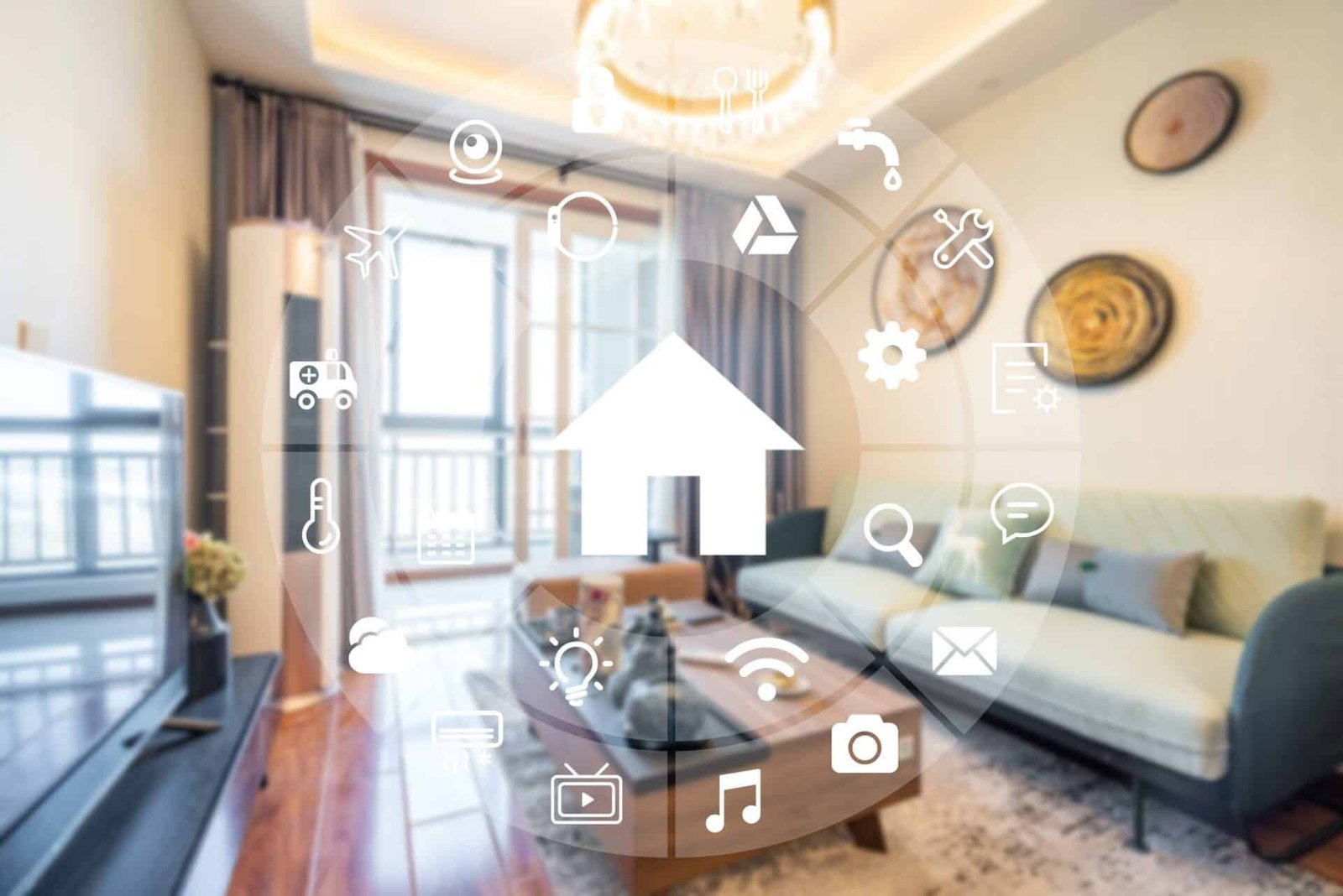We answer the most common questions we hear when it comes to Home Automation. Is home automation worth it? How much is it? We answer these questions and more! As this industry evolves and innovates, we will be adding a lot of useful information as it relates to home automation and smart homes, so bookmark this page! If you don’t see a question on this list, leave a comment or contact us and we’ll do our best to help you out.
What Is Home Automation?
Home automation is the process of automating the various tasks in your home. This can include anything from turning lights on and off to controlling your HVAC system or even multiple tasks like dimming the lights in the home theater room followed by turning on the TV and playing a movie with one command. There are a number of different technologies that can be used for home automation, including smart switches, voice assistants, and home hubs. The type of technology you choose will largely depend on your needs and preferences.
If you’re interested in starting a home automation project, be sure to consult with a professional to get started. They will be able to help you select the right technology and create a plan that meets your specific needs.
What Is The Best Home Automation?
There is no one-size-fits-all answer to this question, as the best home automation system for you will depend on your individual needs and preferences. However, some of the most popular home automation systems include SmartThings, Wink, Home Assistant, Google Nest, Amazon Alexa, Apple HomeKit, and for you geeks, open-source solutions like Home Assistant are available as well.
SmartThings is a comprehensive home automation system that allows you to control lights, locks, thermostats, and other devices with your smartphone or tablet. Wink is also a comprehensive system that allows you to control a wide range of devices, including lights, locks, thermostats, blinds, and garage doors. And Home Assistant is an open-source home automation platform that lets you control lights, switches, fans, temperature sensors, and more.
Is Home Automation Worth The Money?
Although there’s no easy answer to this question, we whole-heartedly say “YES!” It also depends on how you integrate it into your lifestyle. If it is worth it depends on a number of factors, including your budget, the features you’re looking for, and how tech-savvy you are.
Having a fully functioning home automation system is well worth the money. It doesn’t matter if you have a professionally installed system or one you did yourself. It will save you time, save you money, make your home more secure, and a list of other benefits to make your life better. Home automation truly can make your life easier. For example, if you have a smart lockset, you can unlock your door with just a touch of your phone or as you pull up in your driveway. You can schedule lights to come on and off in the morning. You can see who is at the door with a Ring doorbell and decide, “Do I really want to pause my movie, walk up the stairs, and talk to the neighbors?” With Amazon Echo, you can literally program a routine to tell you the traffic conditions at a set time. There are definitely more positive reasons why home automation is worth the money.
How Much Does It Cost To Install A Home Automation System?
To start with a good foundation for your home automation system, you can plan on a base of about $200 to $400 to install a home automation system. However, the cost may vary depending on the specific system you choose and the size of your home. The cost will also depend on if you do DIY home automation vs a professional install. Although a professionally installed home automation system is easier on you the user, the costs can be significantly higher (plus you will have a monthly fee added to it).
Many home automation systems can be controlled using a smartphone or tablet, which means you can easily turn things on or off with ease, perform simple functions and tasks, and a lot more while you’re away from home. If you’re looking for a way to make your home more energy-efficient, a home automation system is a great option. Looking for a way to make your home more secure, a home automation system is wonderful.
What Are The Cost Savings With Home Automation?
If you haven’t quite convinced yourself yet about the cost of getting a home automation system, consider the cost savings. There are dozens of cost savings associated with having a functioning and optimized home automation system. Aside from the energy savings associated with home automation, there are a handful of other cost savings:
Insurance Savings:
Let us preface this by letting you know that every insurance company is different and not all devices and home automation systems will qualify for insurance discounts, but many insurance companies will offer a discount (and it depends if it’s professionally installed or done by you). You can expect to get around 10% of a discount with a home automation system. Some companies will reduce your premiums based on a specific device as well: smart smoke detectors, smart thermostats, and water and gas sensors are some of those devices that might score you some savings. It’s important to check with your home insurance provider first. They might even suggest a device or service you were unaware of.
Home Protection:
There are millions of home break-ins every year. Get a Ring camera and just get involved with the Ring community and you’ll see how big of a problem it is. Home protection is one of the chief reasons for home automation. And it’s a justified reason. Locked doors. Locked windows. Shutting the garage door while you’re miles away. Set an alarm while you’re on vacation (because you forgot when you were headed for your flights). Activate your external cameras with a flip of the finger. Having this remote access to protect your home can save you (and it does save millions of Americans each year) quite a bit of money. Worried about porch thefts? Using a Ring Camera and a MyQ garage door opener addon, I can order something on Amazon and when they deliver, the driver gets a one-time code to open my garage to place my package inside out of reach of those evil little thefts. And yes, the camera keeps an eye on the delivery driver and notifies me that my package arrived. It’s so awesome!
Your Time:
The great Jim Rohn said, “Time is more valuable than money. You can get more money, but you cannot get more time.” And it’s true! Perhaps the most valuable cost savings with home automation is your time. If set up properly, these automation tricks can seriously save you hours and hours over just a handful of months. Just quickly reflecting on the ways it’s saved us time, I came up with a few important ones: locking all the doors at night (don’t have to get out of bed), did I shut the garage (I’ll just ask Alexa to shut it), don’t have to meander downstairs to get the door every time the neighborhood kids knock wanting to play with my kids (it’s quite frequently), helping create shopping lists and to-do lists, and easily buying something through Amazon with a voice prompt. The point is, there are savings all-around if you know how to run one of these systems and utilize them for what they’re really meant to do.
What Can I Do With Home Automation?
Honestly, what you can do with home automation is endless. You can control your home’s temperature, lighting, security, and appliances with home automation. I can pause all of my kids’ devices with a simple voice prompt.
You can also use home automation to monitor your home’s environment, control devices, and a ton of other really cool things. For example, you can use home automation to ensure that your windows and doors are closed properly. Program it to warn you when a window or door opens (if you’re home or away). By the way, I love telling my Google Assistant “Secure the Batcave” and my alarm is set, deadbolts throughout the house lock, all the lights in the living areas all turn off but the light above the kitchen sink dims to 1% as a nightlight, and if my garage door is open, it closes. Come on, if that doesn’t give you “geek-chills” then I don’t know what would! You can automatically open your garage or the front door when you come home. You can schedule all devices to lose connection to the network at a scheduled time. The list goes on and on and on. It seems like each day there’s a new, cool innovative way to use home automation.
What Should I Automate In My House?
You should automate EVERYTHING you can in your house! We say that jokingly, but we kind of mean it. If it can be automated, then you should leverage home automation and the technologies we have to make your life better. What are the best home automation ideas? Seriously though, there are a few things that are prime candidates for automation that we’d recommend as a starting point:
- Heating and Cooling: Automating your heating and cooling can save you a lot of time and money. There are a number of different ways to do this, so find the one that works best for you. For example, if you have a smart thermostat, you can program it to automatically adjust the temperature based on your schedule and preferences. This can help reduce your energy bill by up to 30%.
- Lights: Automating your lights can help you save energy and money. You can also use light automation to create the perfect atmosphere for any occasion. One of my favorite home automation hacks with lighting is setting them to turn on in my son’s room for a set time each morning. I also like to do it myself and I can control how warm the lighting is at certain times of the day (prefer warmer tones in the morning when I first awake vs bright lighting during the afternoon and evening). You can either set up timers so that your lights turn on and off automatically at certain times, or you can install sensors that will detect when someone is in the room and turn on the light accordingly. Another great hack I love is using my Phillips lightbulbs which can display different colors, while I’m away. There’s a scene (this is what they call their automation actions) that comes on in the evening, makes it look like someone’s watching TV in a room. Again AWESOME!
- Security: Automating your security system can help keep your home safe and secure. All you have to do is Google “cool ring camera stories” and you’ll get some really entertaining and interesting stories. You can also use sensors to detect when someone enters or leaves the house, or you can use cameras to keep an eye on things from anywhere in the world.
Home Automation vs Smart Home: Is There A Difference?
There is definitely a difference between home automation and smart home. Home automation refers to the automating of basic tasks like turning on/off lights or adjusting the temperature. A smart home, on the other hand, goes beyond automating these tasks by adding features that make your life easier and more convenient, like being able to control your devices remotely or getting notified when someone enters your home. In my opinion, it’s not an either-or scenario, but how you can leverage both to make your life better and more efficient. Again, if the technology you use in your home disrupts your life, you’re not using it right.
How Can I Do Home Automation Myself?
There are a few ways that you can do home automation yourself. One way is to use a home automation hub. A hub allows you to control all of your devices from one central location. Another way is to use a smart home platform. A smart home platform lets you control your devices using voice commands or mobile apps. Finally, you can also use standalone devices to automate tasks in your home. For example, you can buy a thermostat that automatically adjusts the temperature in your home based on your preferences or a light switch that turns on and off based on whether someone is home or not. Whichever approach you choose, be sure to research the devices and platforms that are available before making a purchase.
Is Home Automation Hard To Setup?
It can be. There are many home automation DIY options, but some of them can be quite challenging to set up. For example, if you want to control your lights with a smartphone or computer, you’ll need to install a home automation hub and program it to work with your specific devices.
However, there are also many home automation DIY solutions that are very easy to set up. For example, if you want to control your lights with a smartphone or computer, all you have to do is install a compatible light switch. So it really depends on what type of home automation you’re trying to achieve.








